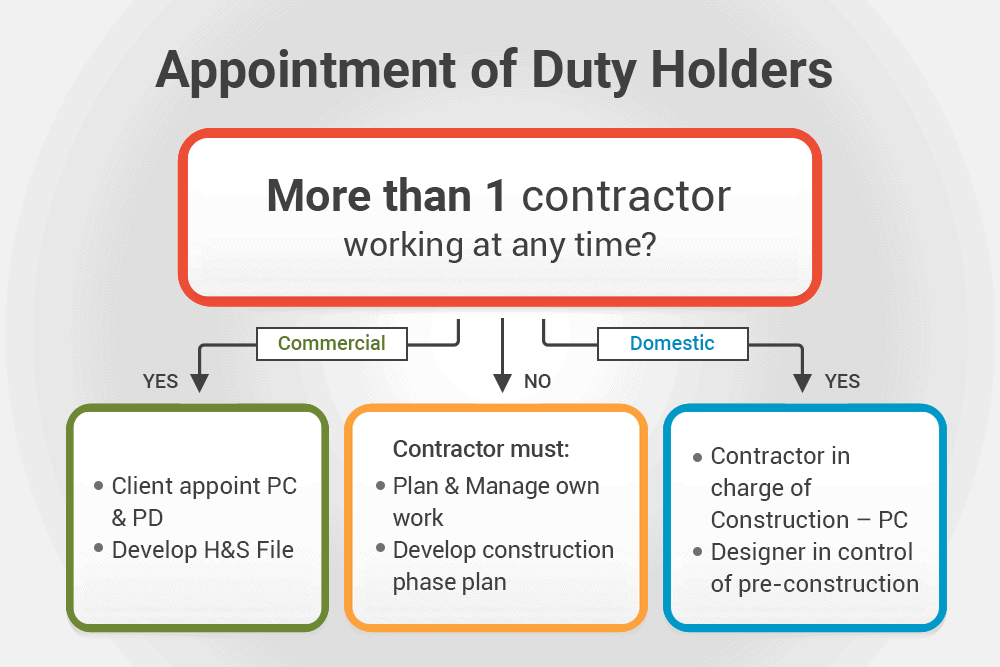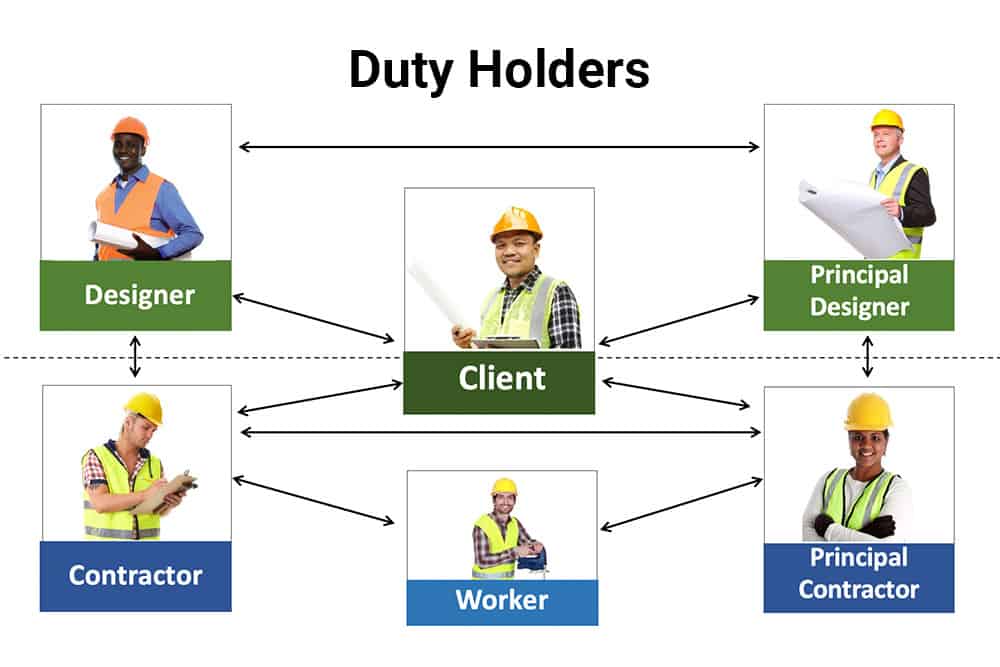
The Construction (Design and Management) Regulations (CDM 2015) cover all construction projects in the UK. In this article, we are going to explore how a CDM project works under a CDM Coordinator. We’ll introduce the main elements that form the structure of a CDM project to meet CDM Regulations 2015.
The Four Main Elements of a CDM Project
There are four main elements to a CDM project:
- The appointment process of duty holders
- Communication and cooperation requirements
- Notifiable Projects
- Documentation Projects
We will now look at the appointment of duty holders and the communication and cooperation requirements between role holders.
Appointment of Duty Holders
Firstly, there is the appointment of duty holders.
The CDM regulations set out certain requirements for the appointment of duty holders depending upon the size of a job and whether it is a domestic or a commercial, or non-domestic, project.
The rule is that where there’s likely to be more than one contractor working on a job, the Client has to appoint a Principal Designer and a Principal Contractor. These appointments must be made in writing.
The CDM 2015 flowchart below illustrates the key decisions that must be made when it comes to these appointments.
As you can see, the flowchart asks if there will be more than one contractor working on-site at any one time.
If the answer to this question is no, then the contractor must plan and manage their own work and develop a construction phase plan. In this scenario, there is no Principal Contractor.
If the answer is yes and it is a commercial or non-domestic job, then the Client must appoint a Principal Contractor and a Principal Designer who will jointly develop a construction phase plan and a health and safety file.
Thirdly, if the answer is yes and it is a domestic job, then the contractor in control of the construction work will act as the Principal Contractor; and the Designer in control of the pre-construction phase will act as the Principal Designer. Again, together they will develop the construction phase plan and the health and safety file.
For domestic projects, the Contractor or Principal Contractor must take on the legal duties of the Client unless otherwise stated in writing.

Communication and Cooperation Between Duty Holders
The second element of a CDM project is ensuring clear communication between duty holders.
It is important to understand that a successful CDM project is one which ensures that everyone involved remains safe and healthy. This is reliant upon effective teamwork.
The various duty holder roles cannot work in isolation. Just like in any effective team, there has to be good communication and cooperation.

Here we can see the basic arrangement of duty holder roles.
The Client sits at the heart of the process, coordinates all roles and, as a minimum, checks that duty holders have individuals in place who can fulfil the duties of the CDM regulations on their behalf.
In practice, the Client checks the principals, who in turn check the duty holders under their control.
So, the Principal Designer checks the Designer, and the Principal Contractor checks Contractors and Workers.
The Principal Designer and Principal Contractor will liaise closely throughout the project.
As their titles suggest, these are the duty holders that have overall responsibility for the design and build activities, and must, therefore, coordinate the CDM team under their control.
Principal Designers will coordinate and approve the activities of Designers to check that they are producing plans that are safe to build.
Principal Contractors must liaise with and supervise Contractors during the construction phase to ensure safe operations. This includes checking that workers are competent to undertake the work they have been assigned.
However, effective teamwork is not just leaders passing down instructions. Communication and cooperation links go in all directions. For example, Contractors will also liaise with Designers during the construction phase when changes are made during the build. Contractors and Designers must also keep their principals informed of any health and safety issues that arise.
The Roles of Duty Holders
Now we will look specifically at the roles of duty holders. An important point to make is that these duty holder positions are roles or corporate functions, not specific people. In other words, many people may play each role, and it may well be different people at different stages of a project.
This can be thought of as a relay team, where the baton is handed from one person to the next, at different stages of a project.
For example:
During the Pre-Construction Phase, a Designer might be someone in an engineering consultancy, working for a firm of architects, who are operating as the Principal Designer. However, during the Construction Phase, a Contractor working onsite who makes changes to the design as they work, will also act as the Designer.
An electrician who changes the wiring design as they undertake the work to take account of issues unforeseen at the design stage would also be both a Contractor and a Designer.
Because of the fluid nature of duty holder roles, it is easy for people to step from one role to another without realising their responsibilities. This is why it is important that everyone involved has a thorough awareness and understanding of the CDM roles.
How to Become a CDM Coordinator
Clear and effective communication between duty holders is crucial to ensuring that CDM regulations are adhered to, during a construction project. Appointing a CDM Coordinator can help to ensure that all regulations are understood and followed.
If you are interested in becoming a CDM coordinator and want to discover more about CDM regulations, participating in an online course is an inexpensive and easy way to gain knowledge. Human Focus offers a range of CDM Training Courses, including CDM Duty Holder Training designed to give you a thorough understanding of CDM principles, the CDM roles and how they work together in practice.





















































































































































































































































































































































































































































































































































































































































































































































